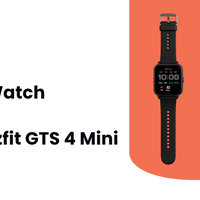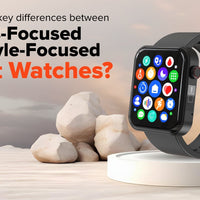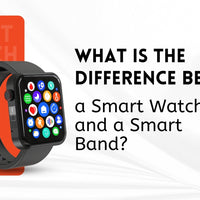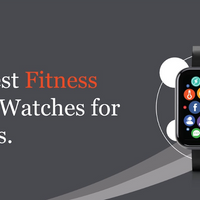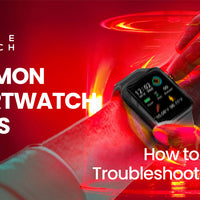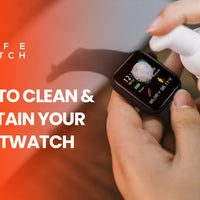In the bustling world of direct response television (DRTV), Yasir Abdul stands out as a transformative figure whose vision significantly reshaped Inventel and contributed to the phenomenal success of Lifewatch. This article explores Abdul's strategic leadership, innovative approaches, and the untold story behind how he revolutionized Inventel.
Introduction to Yasir Abdul and Inventel

Yasir Abdul's entry into Inventel marked a watershed moment for the company. His approach combined visionary leadership with practical execution, which played a pivotal role in redefining Inventel's trajectory and establishing it as a trailblazer in the As Seen on the TV market.
Background of Yasir Abdul:
- Early Career and Vision: Abdul's early career was characterized by a fascination with technology and consumer behaviour. His background in engineering and business provided him with a unique perspective on how to integrate technology with everyday needs. His vision was to create products that were not only innovative but also practical and user-friendly.
- Joining Inventel: Abdul joined Inventel at a time when the company was ripe for transformation. His objective was clear: to leverage Inventel's existing market presence and steer it towards greater innovation and consumer engagement.
Innovative Approach to Product Development
Abdul's leadership at Inventel was marked by a radical shift in how products were developed, focusing on consumer needs, technological advancements, and a collaborative approach to design and testing.
-
Identifying Consumer Needs
Abdul's method for identifying consumer needs involved a multi-faceted approach that combined quantitative and qualitative research techniques to ensure that Inventel's products resonated with real-world requirements.
Strategies for Identifying Needs:
- Comprehensive Market Research: Abdul championed extensive market research initiatives, including demographic studies and consumer behaviour analysis. This helped Inventel understand market gaps and emerging trends.
- Focus Groups and Surveys: Engaging with target audiences through focus groups and surveys provided direct insights into consumer preferences and pain points. Abdul utilized these insights to guide product development and ensure relevance.
- User Experience Studies: Conducting user experience studies to observe how potential customers interacted with existing products. This hands-on approach allowed for the identification of areas needing improvement and informed design decisions.
-
Integrating Cutting-Edge Technology
One of Abdul's significant contributions was integrating cutting-edge technology into product development. His approach was to blend technological advancements with consumer-centric design to create products that were both innovative and practical.
Technological Innovations:
- Smart Technology Integration: Incorporating smart technology into products to enhance functionality and usability. For instance, Lifewatch featured advanced health monitoring capabilities that leveraged the latest in wearable technology.
- Data-Driven Development: Utilizing data analytics to drive product development decisions. Abdul implemented systems to collect and analyze user data, which informed design refinements and feature enhancements.
- Sustainability: Emphasizing the use of sustainable materials and energy-efficient technologies in product design. This not only appealed to environmentally conscious consumers but also set a standard for responsible product development.
-
Collaborative Development Process
Abdul fostered a collaborative development environment at Inventel, recognizing that innovation thrives in a culture of teamwork and shared expertise. This collaborative approach was key to bringing groundbreaking products like Lifewatch to market.
Elements of Collaboration:
- Cross-Functional Teams: Assembling teams with diverse skills, including product designers, engineers, marketers, and customer service experts. This ensured that all aspects of product development were considered and optimized.
- Innovation Workshops: Organizing workshops and brainstorming sessions to generate and refine ideas. These sessions encouraged creative thinking and allowed for the exploration of unconventional solutions.
- Iterative Prototyping: Adopting an iterative approach to prototyping, where multiple versions of a product are developed, tested, and refined based on feedback. This iterative process helped in fine-tuning the product before the final launch.
Transforming Lifewatch into a Success

Lifewatch represents one of the most successful outcomes of Yasir Abdul's vision and strategy. A combination of innovative design, effective marketing, and a strong understanding of consumer needs drove the product's success.
-
Conceptualization and Development
The journey of Lifewatch from concept to market was marked by meticulous planning and execution. Abdul's approach ensured that every stage of development was aligned with the product's vision and market goals.
Key Steps in Development:
- Concept Development: Abdul and his team began with a clear vision of creating a versatile health monitoring device that could seamlessly integrate into users' daily lives. This concept was refined through research and input from potential users.
- Prototype Refinement: Initial prototypes were developed and subjected to rigorous testing. Feedback from these tests led to numerous refinements, ensuring that Lifewatch met high standards of performance and reliability.
- Final Design and Production: Once the prototype was perfected, Abdul oversaw the transition to mass production, focusing on maintaining quality and efficiency throughout the manufacturing process.
-
Marketing and Promotion
The marketing strategy for Lifewatch was designed to capture the attention of a broad audience and communicate the product's unique value proposition effectively.
Marketing Strategies:
- Integrated Campaigns: Launching integrated marketing campaigns that included TV commercials, digital ads, and social media promotions. This multi-channel approach ensured that Lifewatch reached potential customers through various touchpoints.
- Engaging Content: Creating engaging content that demonstrates Lifewatch's features and benefits. The marketing materials included detailed product demonstrations, customer testimonials, and real-life use cases.
- Influencer Partnerships: Partnering with influencers and industry experts to endorse Lifewatch. These partnerships helped build credibility and reach a wider audience through trusted voices.
-
Impact and Success
Lifewatch's success had a profound impact on Inventel and the As Seen TV market, establishing new benchmarks for innovation and consumer engagement.
Impact of Lifewatch:
- Market Penetration: Lifewatch quickly became a market leader, capturing significant market share and setting new standards for health monitoring devices. Its success demonstrated Inventel's ability to innovate and respond to consumer needs.
- Brand Reputation: The success of Lifewatch enhanced Inventel's reputation as a leader in the As Seen on the TV industry. The product's success helped reinforce the company's position and credibility in the market.
- Financial Growth: Lifewatch contributed to substantial revenue growth for Inventel, enabling the company to invest further in research and development and explore new market opportunities.
Challenges and Lessons Learned
The journey of Lifewatch and Inventel under Yasir Abdul's leadership was not without its challenges. These challenges provided valuable lessons and insights that have informed future strategies.
-
Overcoming Challenges
Inventel faced several challenges during the development and launch of Lifewatch, including navigating market competition, addressing production issues, and managing consumer expectations.
Strategies for Overcoming Challenges:
- Agile Problem-Solving: Implementing agile problem-solving techniques to address issues as they arise quickly. This approach allowed Inventel to remain flexible and responsive to challenges.
- Enhanced Quality Control: Strengthening quality control measures to ensure that all products meet the highest standards. This involved implementing additional checks and balances throughout the production process.
- Effective Crisis Management: Developing effective crisis management strategies to handle any negative feedback or issues that emerge. Transparent communication and swift action helped mitigate potential risks.
-
Lessons Learned
The experience of launching Lifewatch provided valuable lessons that have shaped Inventel's approach to future projects and strategies.
Key Lessons:
- Focus on Innovation: The success of Lifewatch highlighted the importance of continuous innovation and staying ahead of market trends. Investing in research and development is crucial for maintaining a competitive edge.
- Customer-Centric Approach: Prioritizing the needs and preferences of customers is essential for creating successful products. Understanding and addressing consumer feedback can significantly enhance product success.
- Strategic Marketing: Effective marketing strategies are critical for driving product awareness and sales. A well-executed marketing campaign can significantly impact a product's market performance.
Conclusion
Yasir Abdul's vision and leadership have been instrumental in revolutionizing Inventel and achieving the remarkable success of Lifewatch. Through innovative product development, strategic marketing, and a deep understanding of consumer needs, Abdul has set new standards in the As Seen TV market. The story of Lifewatch is a testament to the power of visionary leadership and strategic execution in transforming ideas into successful products. As Inventel continues to evolve, Yasir Abdul's legacy will remain a cornerstone of the company's success and a source of inspiration for future innovations.
Read More Articles:
- 10 Best Smartwatches, Editor Tested and Reviewed 2024
- Medical Smartwatch: Wearable Tech in Healthcare
- Exploring the Benefits of LifeWatch
- 6 Types of Useful Smartwatch Interactions
- Difference Between Regular Life Watch and Deluxe Life Watch
- Smart watches: A review of evolution in the bio-medical sector










